

My oldest collection piece is a comet woodcut from Hartmann Schedel's Liber Cronicarum, also known as the Nuremberg Chronicle. The
Chronicle was published in a Latin and a German version which contain more than 1800 woodcuts mainly prepared by Michael Wolgemuth (who was
also the teacher of Albrecht Dürer). It was printed in a comparatively large edition which means that still many single leafs are available as of today.
This leaf is the backside of page CLXVII of the Latin version which was published on July 12, 1493, and illustrates comet reports of the 9th century.
It has a contemporary hand-colouring and of very good condition. The Chronicle repeatedly used similar images to illustrate different events. For
instance, for comet apparitions there were just four woodblocks which were used to illustrate 13 comets (Latin edition).
As far as I know this is the earliest PRINT in which a comet was depicted. At least until now I have not found earlier prints which contain a
printed graphical representation of a comet. There exist earlier printed treatises on comets but without images. If you know of earlier ones, please
let me know. 1450 is usually the year which is seen as the date of the modern book printing by Johannes Gutenberg.
A very good reading on the subject of comets in the Chronicle is given in a paper by R. J. M. Olson and J. M. Pasachoff.
Size of the comet image 6 cm x 8 cm, the whole leave has folio size, i.e. ca. 41 cm x 30 cm.
A scan of the full pages will appear later.

My second oldest collection piece comes from the "History of Flanders" from 1531 and is one of the earliest printed comet images in history. One of the first
printed comet images appeared in the 1493 Nuremberg Chronicles, so this appeared just 38 years later. This is a woodcut of the comet of 1472 (C/1471 Y1).
A folio-sized text page with the woodcut in the lower left. The text above the woodcut says
"Van een wonderlicke Comete die ghesien was int iaer van. lxxii.", which means "Of a strange comet which was seen in the year of 72."
The other text says:
"Item ontrent desen seluen tijt in die maent van Lauwe doe was die vreeselicste comete ghesien met eenen langen breeden steerte, die welcke beteekende groot
verdriet vanden landen, ende bloetsturtinghe van princhen, also men hier naer welhoren sal. Ende dese commete draeyde altijt naer tcours vander mane."
This has been translated with the help of Koen van der Auwera and Erik Bryssinck with Carolien De Staelen and says:
"Around the same time in the month of January a most dreadful comet was seen with a long and broad tail, which brought great sorrows to the land and
death/bloodshed to the princes, of which later here the stories will be heard. And this comet turned around like the course of the moon/turned towards the
direction of the moon."
Size is 9 cm x 11 cm.


The image shows a folded plate from "Relationis Historicae Semestralis Continuatio, Jacobi Franci historische Beschreibung
der denckwürdigsten Geschichten, so sich in Europa, Hoch- und Nieder-Teutschland ... vor und zwischen jüngst verwichener Franckfurter Herbst-Meß deß
1664 biß in die Fasten- oder Oster-Meß deß 1665 Jahrs ... zugetragen". (1665)
Size 32 cm x 25 cm.
More details on a separate page.

Single leaf copper engraving showing comet C/1680 V1 over Augsburg, Germany, by Jacob Koppmeir. The text reads
"Principal report on the fearful comet-star which was seen newly and again on December 16/26 of the year 1680, after it was hidden for three weeks
in the rays of the Sun. It moves quite swiftly and seems to follow the Moon [?]. The tail was 70 degrees long as far as one could tell it with the bright
Moon present. Furthermore the little report details on the origin of the comet."
Size 15 cm x 23 cm.
.
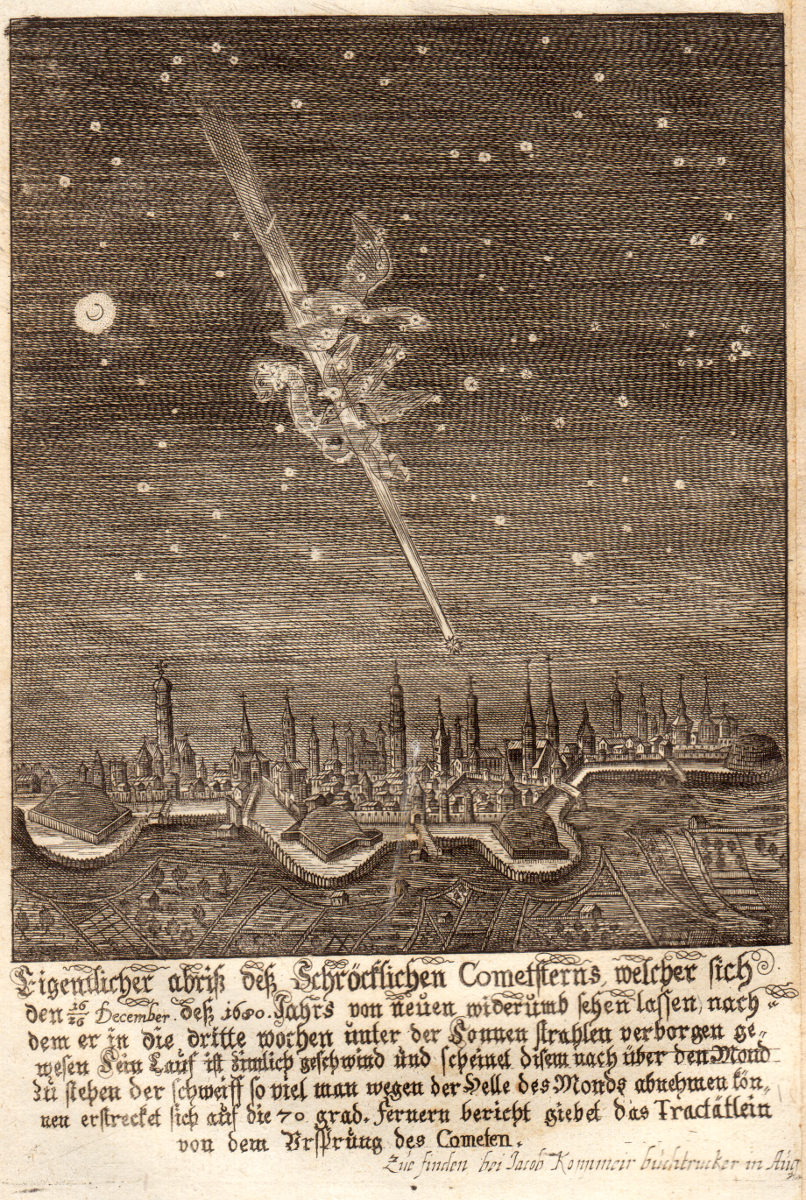
Comet C/1652 Y1. Interestingly, the dates for the position of the comet relative to the Pleiades are mixed up. Details on the print can be found on
Henk Bril's excellent site. Using a star chart software one can easily see that the dates for the small
inserts on the left have been mixed up, as well as the shape of the Pleiades. But one has to remember that the artist most likely did not see the comet at all!
Size is 26 cm x 23 cm.
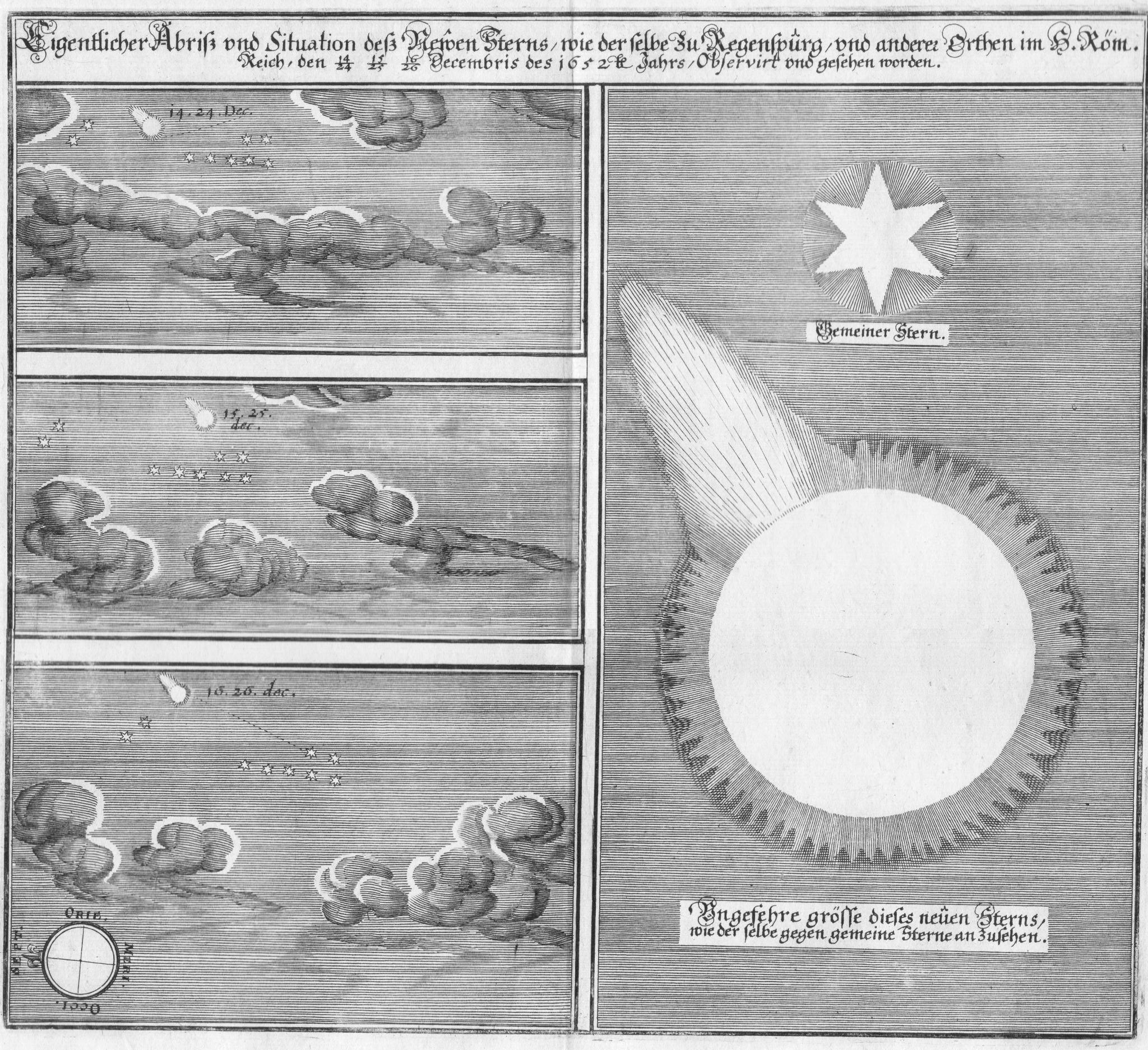
Comet C/1680 V1. This print is made after an older version from Friedrich Madeweis, Berlin, of 1681.
The oval shape in the lower right depicts a so-called "comet egg" in the older version. The artist just took over the oval shape but not the drawings on the
egg. Here is another print showing comet eggs.
Size is 31 cm x 20 cm.
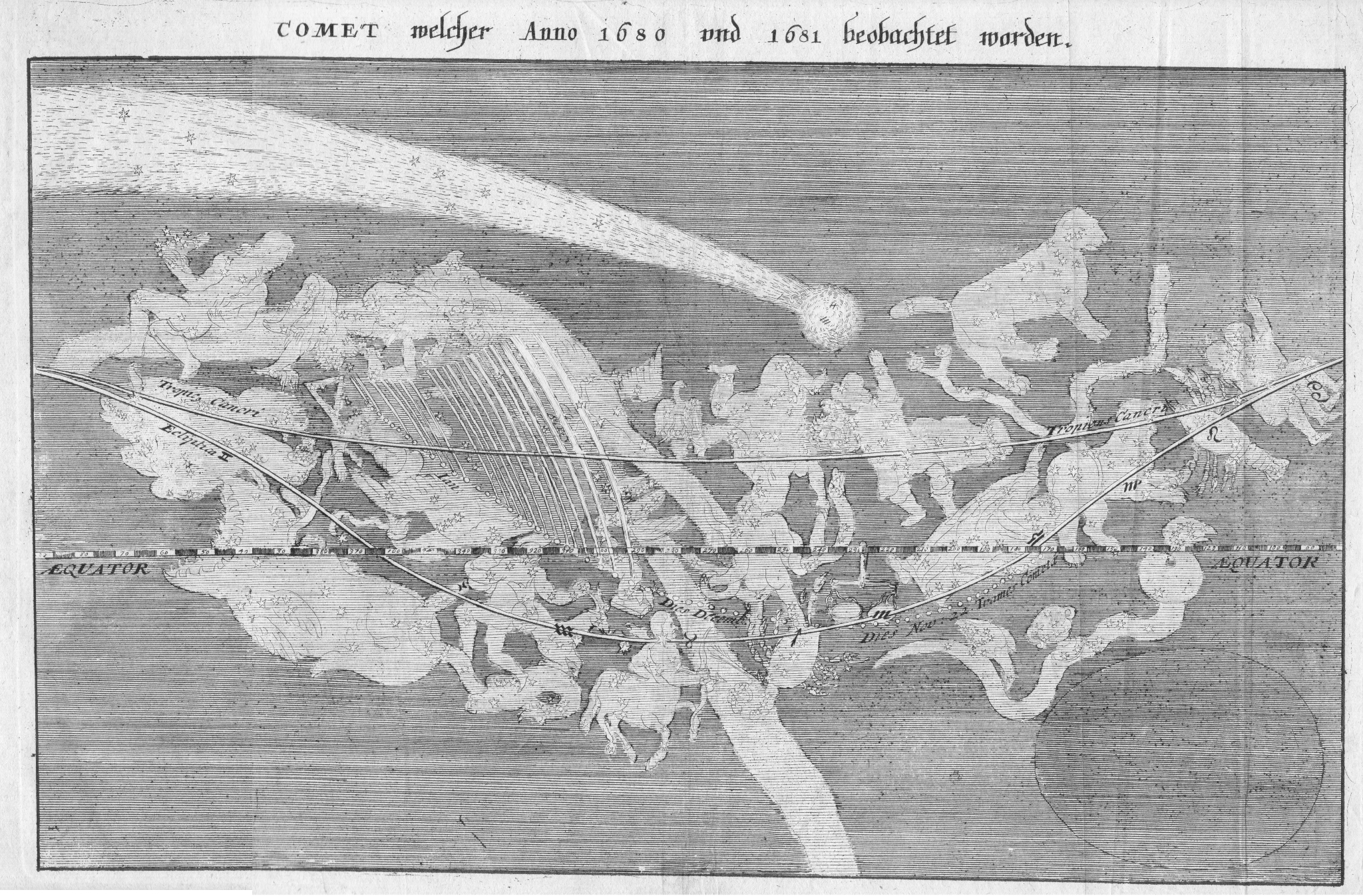
This is a very interesting print. It is a folio sized page showing several comet forms (Varia Cometarum Figurae) which were obviously inspired by figures given in
Hevelius' Cometographia" which were itself drawn after descriptions by Pliny the Elder. Here is
an example page from Hevelius' work.
Size is 34 cm x 21 cm.

Page number 27 of Doppelmayr's Atlas Coelestis pulished first in 1742. The hand-coloured map shows the apparent tracks of notable comets of the
17th and 16th century. Different comet theories and physical explanations are also given.
Size is 60 cm x 51 cm.
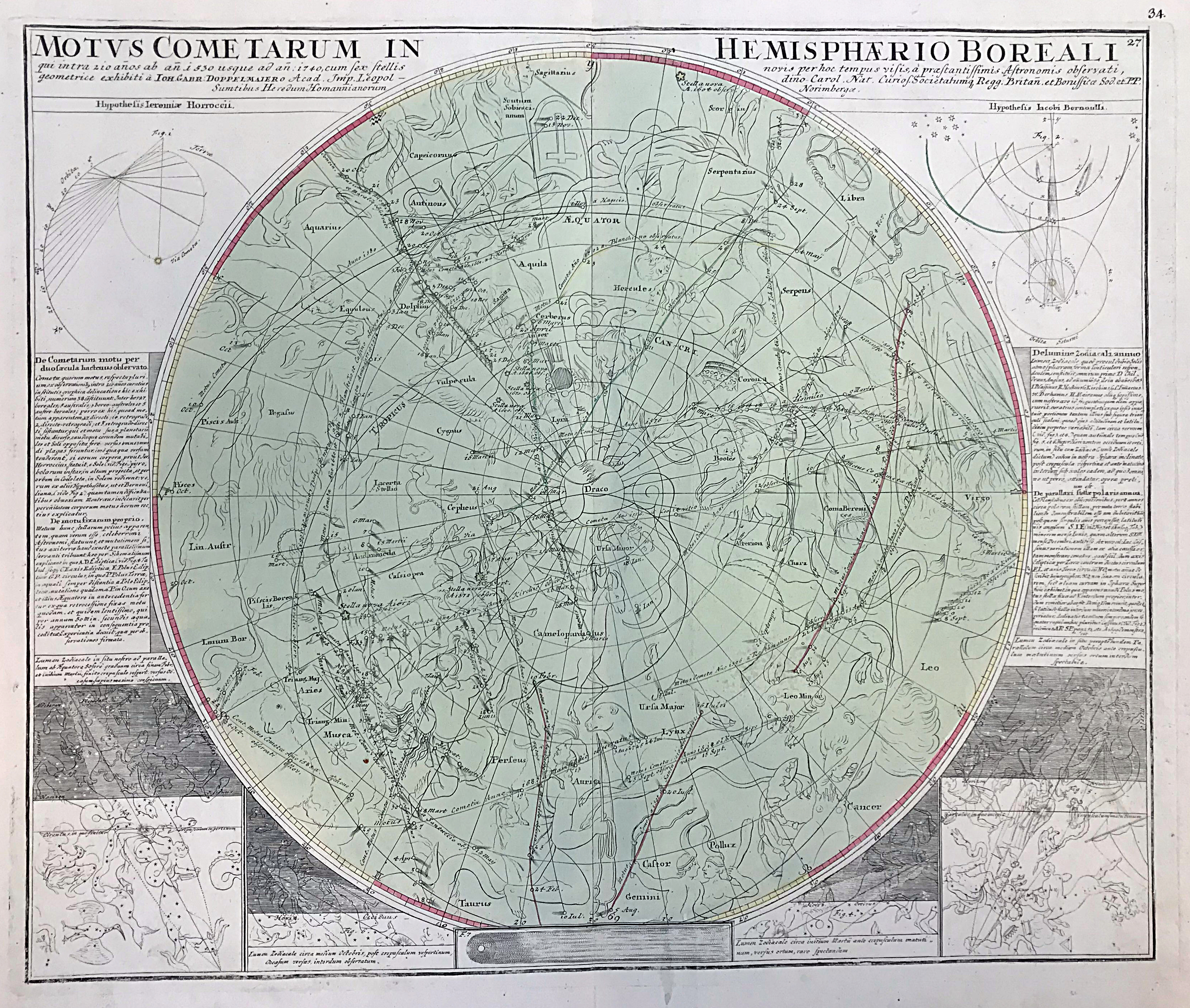
Print of comet C/1769 P1 in a paper by Pehr Wargentin. Size is 36 cm x 15 cm.
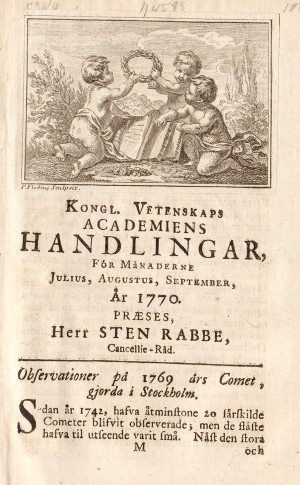
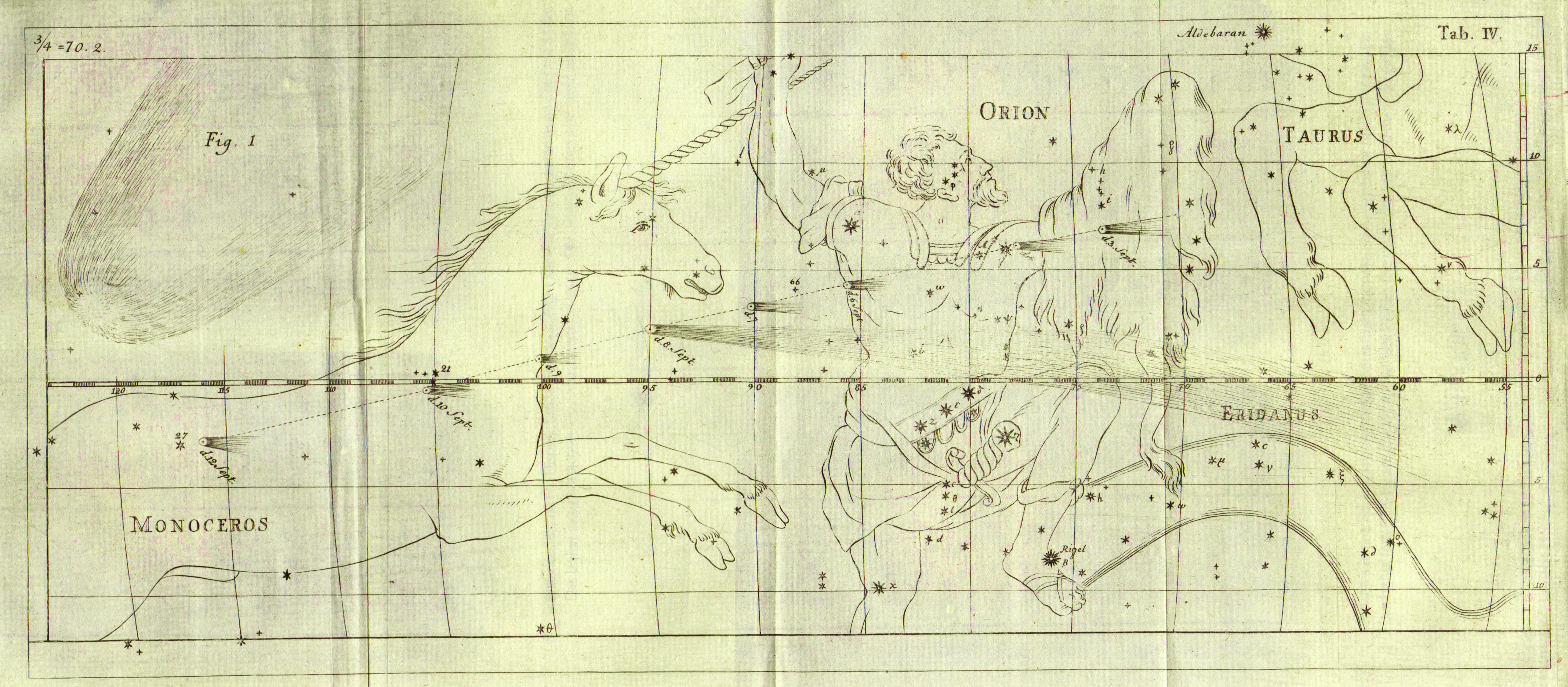
Catalogue of Comet Discoveries
If you have any questions, please email me (maik@comethunter.de).